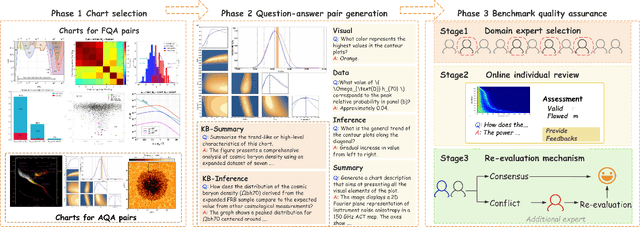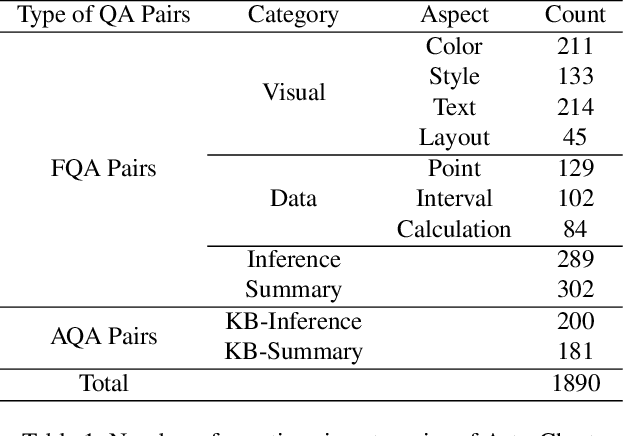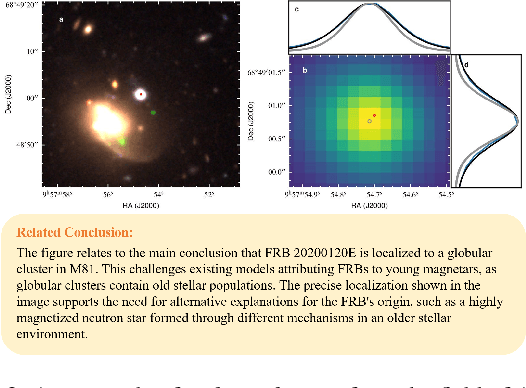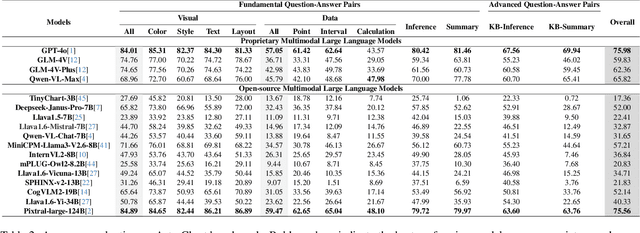Jing Yang
Evaluating Cognitive-Behavioral Fixation via Multimodal User Viewing Patterns on Social Media
Sep 05, 2025Abstract:Digital social media platforms frequently contribute to cognitive-behavioral fixation, a phenomenon in which users exhibit sustained and repetitive engagement with narrow content domains. While cognitive-behavioral fixation has been extensively studied in psychology, methods for computationally detecting and evaluating such fixation remain underexplored. To address this gap, we propose a novel framework for assessing cognitive-behavioral fixation by analyzing users' multimodal social media engagement patterns. Specifically, we introduce a multimodal topic extraction module and a cognitive-behavioral fixation quantification module that collaboratively enable adaptive, hierarchical, and interpretable assessment of user behavior. Experiments on existing benchmarks and a newly curated multimodal dataset demonstrate the effectiveness of our approach, laying the groundwork for scalable computational analysis of cognitive fixation. All code in this project is publicly available for research purposes at https://github.com/Liskie/cognitive-fixation-evaluation.
EMPOWER: Evolutionary Medical Prompt Optimization With Reinforcement Learning
Aug 25, 2025Abstract:Prompt engineering significantly influences the reliability and clinical utility of Large Language Models (LLMs) in medical applications. Current optimization approaches inadequately address domain-specific medical knowledge and safety requirements. This paper introduces EMPOWER, a novel evolutionary framework that enhances medical prompt quality through specialized representation learning, multi-dimensional evaluation, and structure-preserving algorithms. Our methodology incorporates: (1) a medical terminology attention mechanism, (2) a comprehensive assessment architecture evaluating clarity, specificity, clinical relevance, and factual accuracy, (3) a component-level evolutionary algorithm preserving clinical reasoning integrity, and (4) a semantic verification module ensuring adherence to medical knowledge. Evaluation across diagnostic, therapeutic, and educational tasks demonstrates significant improvements: 24.7% reduction in factually incorrect content, 19.6% enhancement in domain specificity, and 15.3% higher clinician preference in blinded evaluations. The framework addresses critical challenges in developing clinically appropriate prompts, facilitating more responsible integration of LLMs into healthcare settings.
Multi-Metric Preference Alignment for Generative Speech Restoration
Aug 24, 2025Abstract:Recent generative models have significantly advanced speech restoration tasks, yet their training objectives often misalign with human perceptual preferences, resulting in suboptimal quality. While post-training alignment has proven effective in other generative domains like text and image generation, its application to generative speech restoration remains largely under-explored. This work investigates the challenges of applying preference-based post-training to this task, focusing on how to define a robust preference signal and curate high-quality data to avoid reward hacking. To address these challenges, we propose a multi-metric preference alignment strategy. We construct a new dataset, GenSR-Pref, comprising 80K preference pairs, where each chosen sample is unanimously favored by a complementary suite of metrics covering perceptual quality, signal fidelity, content consistency, and timbre preservation. This principled approach ensures a holistic preference signal. Applying Direct Preference Optimization (DPO) with our dataset, we observe consistent and significant performance gains across three diverse generative paradigms: autoregressive models (AR), masked generative models (MGM), and flow-matching models (FM) on various restoration benchmarks, in both objective and subjective evaluations. Ablation studies confirm the superiority of our multi-metric strategy over single-metric approaches in mitigating reward hacking. Furthermore, we demonstrate that our aligned models can serve as powerful ''data annotators'', generating high-quality pseudo-labels to serve as a supervision signal for traditional discriminative models in data-scarce scenarios like singing voice restoration. Demo Page:https://gensr-pref.github.io
Breaking the Multi-Enhancement Bottleneck: Domain-Consistent Quality Enhancement for Compressed Images
Jun 17, 2025Abstract:Quality enhancement methods have been widely integrated into visual communication pipelines to mitigate artifacts in compressed images. Ideally, these quality enhancement methods should perform robustly when applied to images that have already undergone prior enhancement during transmission. We refer to this scenario as multi-enhancement, which generalizes the well-known multi-generation scenario of image compression. Unfortunately, current quality enhancement methods suffer from severe degradation when applied in multi-enhancement. To address this challenge, we propose a novel adaptation method that transforms existing quality enhancement models into domain-consistent ones. Specifically, our method enhances a low-quality compressed image into a high-quality image within the natural domain during the first enhancement, and ensures that subsequent enhancements preserve this quality without further degradation. Extensive experiments validate the effectiveness of our method and show that various existing models can be successfully adapted to maintain both fidelity and perceptual quality in multi-enhancement scenarios.
The AI Imperative: Scaling High-Quality Peer Review in Machine Learning
Jun 09, 2025Abstract:Peer review, the bedrock of scientific advancement in machine learning (ML), is strained by a crisis of scale. Exponential growth in manuscript submissions to premier ML venues such as NeurIPS, ICML, and ICLR is outpacing the finite capacity of qualified reviewers, leading to concerns about review quality, consistency, and reviewer fatigue. This position paper argues that AI-assisted peer review must become an urgent research and infrastructure priority. We advocate for a comprehensive AI-augmented ecosystem, leveraging Large Language Models (LLMs) not as replacements for human judgment, but as sophisticated collaborators for authors, reviewers, and Area Chairs (ACs). We propose specific roles for AI in enhancing factual verification, guiding reviewer performance, assisting authors in quality improvement, and supporting ACs in decision-making. Crucially, we contend that the development of such systems hinges on access to more granular, structured, and ethically-sourced peer review process data. We outline a research agenda, including illustrative experiments, to develop and validate these AI assistants, and discuss significant technical and ethical challenges. We call upon the ML community to proactively build this AI-assisted future, ensuring the continued integrity and scalability of scientific validation, while maintaining high standards of peer review.
Augmenting Online RL with Offline Data is All You Need: A Unified Hybrid RL Algorithm Design and Analysis
May 19, 2025Abstract:This paper investigates a hybrid learning framework for reinforcement learning (RL) in which the agent can leverage both an offline dataset and online interactions to learn the optimal policy. We present a unified algorithm and analysis and show that augmenting confidence-based online RL algorithms with the offline dataset outperforms any pure online or offline algorithm alone and achieves state-of-the-art results under two learning metrics, i.e., sub-optimality gap and online learning regret. Specifically, we show that our algorithm achieves a sub-optimality gap $\tilde{O}(\sqrt{1/(N_0/\mathtt{C}(\pi^*|\rho)+N_1}) )$, where $\mathtt{C}(\pi^*|\rho)$ is a new concentrability coefficient, $N_0$ and $N_1$ are the numbers of offline and online samples, respectively. For regret minimization, we show that it achieves a constant $\tilde{O}( \sqrt{N_1/(N_0/\mathtt{C}(\pi^{-}|\rho)+N_1)} )$ speed-up compared to pure online learning, where $\mathtt{C}(\pi^-|\rho)$ is the concentrability coefficient over all sub-optimal policies. Our results also reveal an interesting separation on the desired coverage properties of the offline dataset for sub-optimality gap minimization and regret minimization. We further validate our theoretical findings in several experiments in special RL models such as linear contextual bandits and Markov decision processes (MDPs).
How Transformers Learn Regular Language Recognition: A Theoretical Study on Training Dynamics and Implicit Bias
May 02, 2025Abstract:Language recognition tasks are fundamental in natural language processing (NLP) and have been widely used to benchmark the performance of large language models (LLMs). These tasks also play a crucial role in explaining the working mechanisms of transformers. In this work, we focus on two representative tasks in the category of regular language recognition, known as `even pairs' and `parity check', the aim of which is to determine whether the occurrences of certain subsequences in a given sequence are even. Our goal is to explore how a one-layer transformer, consisting of an attention layer followed by a linear layer, learns to solve these tasks by theoretically analyzing its training dynamics under gradient descent. While even pairs can be solved directly by a one-layer transformer, parity check need to be solved by integrating Chain-of-Thought (CoT), either into the inference stage of a transformer well-trained for the even pairs task, or into the training of a one-layer transformer. For both problems, our analysis shows that the joint training of attention and linear layers exhibits two distinct phases. In the first phase, the attention layer grows rapidly, mapping data sequences into separable vectors. In the second phase, the attention layer becomes stable, while the linear layer grows logarithmically and approaches in direction to a max-margin hyperplane that correctly separates the attention layer outputs into positive and negative samples, and the loss decreases at a rate of $O(1/t)$. Our experiments validate those theoretical results.
Benchmark of Segmentation Techniques for Pelvic Fracture in CT and X-ray: Summary of the PENGWIN 2024 Challenge
Apr 03, 2025Abstract:The segmentation of pelvic fracture fragments in CT and X-ray images is crucial for trauma diagnosis, surgical planning, and intraoperative guidance. However, accurately and efficiently delineating the bone fragments remains a significant challenge due to complex anatomy and imaging limitations. The PENGWIN challenge, organized as a MICCAI 2024 satellite event, aimed to advance automated fracture segmentation by benchmarking state-of-the-art algorithms on these complex tasks. A diverse dataset of 150 CT scans was collected from multiple clinical centers, and a large set of simulated X-ray images was generated using the DeepDRR method. Final submissions from 16 teams worldwide were evaluated under a rigorous multi-metric testing scheme. The top-performing CT algorithm achieved an average fragment-wise intersection over union (IoU) of 0.930, demonstrating satisfactory accuracy. However, in the X-ray task, the best algorithm attained an IoU of 0.774, highlighting the greater challenges posed by overlapping anatomical structures. Beyond the quantitative evaluation, the challenge revealed methodological diversity in algorithm design. Variations in instance representation, such as primary-secondary classification versus boundary-core separation, led to differing segmentation strategies. Despite promising results, the challenge also exposed inherent uncertainties in fragment definition, particularly in cases of incomplete fractures. These findings suggest that interactive segmentation approaches, integrating human decision-making with task-relevant information, may be essential for improving model reliability and clinical applicability.
Exploiting Temporal State Space Sharing for Video Semantic Segmentation
Mar 26, 2025Abstract:Video semantic segmentation (VSS) plays a vital role in understanding the temporal evolution of scenes. Traditional methods often segment videos frame-by-frame or in a short temporal window, leading to limited temporal context, redundant computations, and heavy memory requirements. To this end, we introduce a Temporal Video State Space Sharing (TV3S) architecture to leverage Mamba state space models for temporal feature sharing. Our model features a selective gating mechanism that efficiently propagates relevant information across video frames, eliminating the need for a memory-heavy feature pool. By processing spatial patches independently and incorporating shifted operation, TV3S supports highly parallel computation in both training and inference stages, which reduces the delay in sequential state space processing and improves the scalability for long video sequences. Moreover, TV3S incorporates information from prior frames during inference, achieving long-range temporal coherence and superior adaptability to extended sequences. Evaluations on the VSPW and Cityscapes datasets reveal that our approach outperforms current state-of-the-art methods, establishing a new standard for VSS with consistent results across long video sequences. By achieving a good balance between accuracy and efficiency, TV3S shows a significant advancement in spatiotemporal modeling, paving the way for efficient video analysis. The code is publicly available at https://github.com/Ashesham/TV3S.git.
DomainCQA: Crafting Expert-Level QA from Domain-Specific Charts
Mar 25, 2025



Abstract:Chart Question Answering (CQA) benchmarks are essential for evaluating the capability of Multimodal Large Language Models (MLLMs) to interpret visual data. However, current benchmarks focus primarily on the evaluation of general-purpose CQA but fail to adequately capture domain-specific challenges. We introduce DomainCQA, a systematic methodology for constructing domain-specific CQA benchmarks, and demonstrate its effectiveness by developing AstroChart, a CQA benchmark in the field of astronomy. Our evaluation shows that chart reasoning and combining chart information with domain knowledge for deeper analysis and summarization, rather than domain-specific knowledge, pose the primary challenge for existing MLLMs, highlighting a critical gap in current benchmarks. By providing a scalable and rigorous framework, DomainCQA enables more precise assessment and improvement of MLLMs for domain-specific applications.
 Add to Chrome
Add to Chrome Add to Firefox
Add to Firefox Add to Edge
Add to Edge